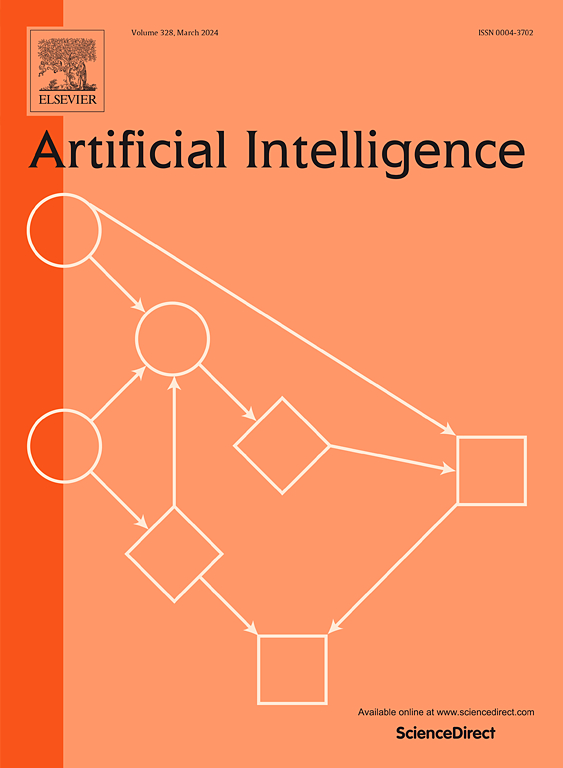从部分轨迹学习的提升行动模型
IF 4.6
2区 计算机科学
Q1 COMPUTER SCIENCE, ARTIFICIAL INTELLIGENCE
引用次数: 0
摘要
要应用符号规划,就必须提供符号行动模型的规范,而这种规范通常是由领域专家手动指定的。然而,由于人为错误或缺乏领域知识,这种编码可能会出现问题。因此,以自动方式学习符号动作模型已被广泛采用,以替代人工规范。在本文中,我们将重点关注从部分可观察计划跟踪的输入集离线学习动作模型的问题。特别是,我们提出了一种方法来(i) 通过应用预定义的逻辑规则来增强给定计划跟踪的可观察性;(ii) 从行动执行前后的部分观察结果中学习计划跟踪中每个行动的前提条件和效果。我们从形式上证明,我们的方法所学习的行动模型具有其他方法无法提供的基本理论属性。我们通过实验证明,在大量现有基准领域中,我们的方法优于最先进的方法。此外,我们还比较了学习到的行动模型在解决规划问题时的有效性,结果表明我们的方法学习到的行动模型比最先进的方法更有效1。本文章由计算机程序翻译,如有差异,请以英文原文为准。
Lifted action models learning from partial traces
For applying symbolic planning, there is the necessity of providing the specification of a symbolic action model, which is usually manually specified by a domain expert. However, such an encoding may be faulty due to either human errors or lack of domain knowledge. Therefore, learning the symbolic action model in an automated way has been widely adopted as an alternative to its manual specification. In this paper, we focus on the problem of learning action models offline, from an input set of partially observable plan traces. In particular, we propose an approach to: (i) augment the observability of a given plan trace by applying predefined logical rules; (ii) learn the preconditions and effects of each action in a plan trace from partial observations before and after the action execution. We formally prove that our approach learns action models with fundamental theoretical properties, not provided by other methods. We experimentally show that our approach outperforms a state-of-the-art method on a large set of existing benchmark domains. Furthermore, we compare the effectiveness of the learned action models for solving planning problems and show that the action models learned by our approach are much more effective w.r.t. a state-of-the-art method.1
求助全文
通过发布文献求助,成功后即可免费获取论文全文。
去求助
来源期刊

Artificial Intelligence
工程技术-计算机:人工智能
CiteScore
11.20
自引率
1.40%
发文量
118
审稿时长
8 months
期刊介绍:
The Journal of Artificial Intelligence (AIJ) welcomes papers covering a broad spectrum of AI topics, including cognition, automated reasoning, computer vision, machine learning, and more. Papers should demonstrate advancements in AI and propose innovative approaches to AI problems. Additionally, the journal accepts papers describing AI applications, focusing on how new methods enhance performance rather than reiterating conventional approaches. In addition to regular papers, AIJ also accepts Research Notes, Research Field Reviews, Position Papers, Book Reviews, and summary papers on AI challenges and competitions.
 求助内容:
求助内容: 应助结果提醒方式:
应助结果提醒方式:


